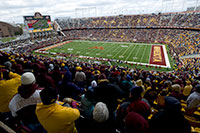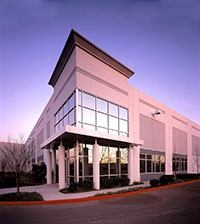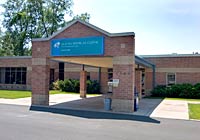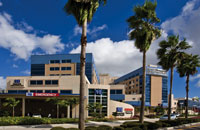view all Case Studies
Top of the Class Performance with Building Controls

To meet a challenge handed down by the president of the University of Minnesota to become one of the top three publicly funded research institutions in the world, for nearly two decades the Facilities Management Department has worked to integrate building control systems, resulting in continued energy and operational efficiencies which support the University’s greater goal.
October 21, 2010 -
Building Automation
To meet a challenge handed down by the president of the University of Minnesota to become one of the top three publicly funded research institutions in the world, for nearly two decades the Facilities Management Department has worked to integrate building control systems, resulting in continued energy and operational efficiencies which support the University’s greater goal.
The University of Minnesota serves over 66,000 students across two campuses and 320 buildings. The controls upgrade began when the school wanted to integrate the building management systems on its Duluth and Twin Cities campuses, which are 150 miles apart. A multi-vendor head-end workstation was installed to integrate a number of legacy building automation systems, which controlled 28,000 physical points.
To continue the integration, the University began migrating to BACnet compatible equipment and replacing legacy control systems with Metasys building management system. The University has implemented stringent BACnet compatibility standards including intrinsic alarming. About 80 percent of the University’s building management systems operate on BACnet, which allows integration of equipment from a variety of vendors.
The BACnet implementation allows the University to centrally monitor and control all building systems using the Metasys system as a single-seat user interface. U of M’s Metasys system now controls nearly 60,000 physical points – the largest Metasys installation in North America, according to the company.
Building controls integration also facilitated another of the University’s goals: to reduce energy consumption by five percent over an 18 month period.
The University is divided into four districts from an operations standpoint with multiple personnel monitoring systems and equipment across campus on a 24/7 basis. Managing all of the data collected is a challenge for the University’s Energy Managment Group. The Metasys system’s reporting capabilities allows for such comparisons as how many hours fan have fun compared to how they were scheduled to run, making it easier to see if schedules were overridden.
The five percent energy savings goal was achieved in 3 month sooner than planned and resulted in an annual energy savings of over $2.4 million.
The University’s commitment to systems integration and energy management can be seen in its new construction as well as retrofits. The LEED Silver-certified TCF Bank stadium, the first Big Ten stadium constructed since 1960, uses more than 450 multi-vendor BACnet devices integrating equipment such as lighting, fire and security systems and an emergency generator.
Next
Read next on FacilitiesNet












